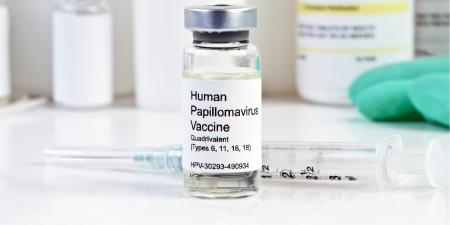Rationale
Childhood vaccination is one of the greatest and most dramatic successes of modern medicine and is responsible for reduced incidence and even the disappearance of previously common and serious childhood diseases. Compared to childhood vaccination, however, adult vaccination has not been as successful, and more adults die each year from vaccine-preventable diseases [1]. An embarrassingly high number of adults become ill, are hospitalized and even die because of infections that physicians can but don’t prevent.
Medical residents are certainly not solely responsible for this disturbing problem, but they can help solve it during their training and later in their practice. Residents care for a high proportion of patients who are particularly vulnerable to preventable infections because of age-related declining immunity, chronic illnesses, or immunosuppressive treatments. Our medical care system has not done a good job of identifying and vaccinating at-risk adults.
Although immunization is one of the most effective public health measures to prevent disease, vaccination rates in adults remain low [2]. As recently as 4 years ago, about 64 percent of adults over 65 and 31 percent of adults 18-64 were vaccinated against influenza. The influenza vaccine is now recommended for all adults regardless of underlying risk factors. As for other vaccines, 57 percent of adults have been vaccinated for pneumonia and 44 percent for tetanus/diphtheria toxoid. Thirteen percent of men who have sex with men have been vaccinated against hepatitis B [3].
Two vaccine-preventable diseases, influenza and pneumococcal pneumonia, the most common cause of community-acquired pneumonia (CAP), provide dramatic evidence of the problem and potential progress we can make. In 2005, more than 60,000 adults died of pneumonia in the United States, where it is the eighth leading cause of death. Hospitalized patients with pneumonia required an average stay of more than 5 days, 20 percent were admitted to an intensive care unit, their mortality rate was as high as 23 percent, and the economic burden of CAP is more than $17 billion annually [4]. Residents cared for many of these individuals during their admission for pneumonia, but they or other residents likely encountered these same patients earlier for other reasons in their clinics, the emergency room, or in the hospital.
The Centers for Disease Control and Prevention (CDC) estimates that for every one million vaccinated people older than 65 years, about 1,300 hospitalizations and 900 deaths can be avoided in a typical season [3]. Similarly, herpes zoster (shingles) affects one in three people during their lifetimes, causing about one million cases per year in the U.S., mostly in adults over 60 or with immune-compromising conditions. A still-underused but safe and effective zoster vaccine was introduced in 2006 [5].
Because some infections are both preventable and communicable, a resident who immunizes her patient against influenza or hepatitis A or B, for example, may not only prevent illness in that patient, but also in a spouse, children, or other contacts. Furthermore, even in the particular immunized patient, the benefits may multiply. In individuals over 65 with cardiovascular disease, influenza vaccination has resulted in a 60 percent reduction in death from all causes, including myocardial infarction, cerebrovascular accident, and congestive heart failure [6].
Opportunities
Clinic visits. A clinic visit with a patient has some characteristics that create an excellent opportunity to review immunization status and risk factors for particular infections and to actually administer vaccines. The patient is not as likely to be as seriously ill as an inpatient and is therefore more able to provide relevant history and information and to understand, respond to, and comply with a suggestion to be immunized. The resident is more likely to have a prior relationship with a clinic patient and to see him or her again. This should help establish trust, which may be critical in the decision to be immunized. It may also strengthen the resident’s sense of obligation to the patient and the patient’s future health. No resident wants to hear that her clinic patient has gotten sick or died from an infection that she could have prevented.
An immunization during a clinic visit scheduled for another reason is efficient and more likely to be accepted by patients than a visit scheduled exclusively for a vaccination. The clinic chart may be a better resource for immunization history and a better place to document vaccinations than the inpatient record.
Spouses or other family members often accompany patients to the clinic. It’s not unreasonable to inquire about their immunization status as well. If they, too, would benefit from a vaccine, the clinic is generally well suited to provide it for them. Here is another chance to reap a dual benefit. If the patient has an impaired response to a vaccine, a fully immunized contact may be less likely to acquire infection from or transmit infection to the patient.
Hospitalized patients. Inpatient admissions, while perhaps not ideal times to discuss and provide prevention for future infections, are opportunities to do so and may even have some advantages. Certainly, for some patients, a hospitalization is their first or only contact with the health care system. For these patients and those with intermittent visits and no primary care physician, a hospital stay may provide the best or only opportunity to immunize them [7]. For these patients and virtually all others, the prospect of being seriously ill and returning to the hospital is not an appealing one, hence they may welcome a chance to prevent the infection that could cause such an event. If a vaccine is indicated for an inpatient based on risk factors or guidelines, then giving it during admission is more reasonable and efficient than scheduling an outpatient visit exclusively for that.
The relationship that a resident builds with a hospitalized patient can also serve as the basis for trust that makes vaccine acceptance more likely. The fact that the resident shows concern for the patient’s future health can enhance the patient’s regard for the doctor and perhaps even improve adherence to other recommendations. Many respected professional and public health organizations, including The Advisory Committee on Immunization Practices, the Centers for Medicare and Medicaid Service, the American Thoracic Society, and the Infectious Diseases Society of America [6], have endorsed immunizing hospitalized adults against influenza and pneumococcal disease. The emergency department. An emergency room visit seems an unlikely setting in which to consider immunization, but there are some paradoxical situations and some reasonable imperatives that arise there. When, in early fall, a 55-year-old man comes to the ER with a cough and fever and has a radiograph with a lobar infiltrate, most residents would recognize community-acquired pneumonia and treat it appropriately. Some residents would recognize that this was a preventable infection and that it, by itself, may not prevent future similar infections. It might actually indicate that the patient is at increased risk of those infections. These residents might consider and recommend pneumococcal or influenza vaccine or both for such a patient and, depending on the treatment plan, actually give the vaccines in the ER or recommend they be given in the hospital or at a follow-up appointment.
The most common trigger for immunization in the ER is an injury or laceration. That often prompts a question about relevant immunization history followed by a shot of tetanus or tetanus and diphtheria toxoid. The National Hospital Ambulatory Care Survey from 1992 to 2000 showed that ERs gave 27,738,800 vaccines, 93 percent of which were for tetanus [6]. Specific exposures also lead residents and attending physicians in the ER to commonly give rabies or hepatitis vaccines. Because those who seek care in the ER are more likely to be underimmunized, less likely to receive regular physician care, and more likely to be of lower socioeconomic status than patient who do not come into emergency departments, the ER provides a good—and often the only—opportunity for prevention. That may be particularly true for influenza and pneumococcal immunization, but the opportunity is rarely used [6].
In one study of patients with risk factors who developed pneumococcal bacteremia, nearly 90 percent had been in an ER during the preceding 5 years. Only about half had been a medicine inpatient and only about a third had been in a general medical clinic [6]. Thus, from a risk-benefit perspective, the ER may actually be the best opportunity to immunize against that infection, but certainly not the only setting in which to do so. The Centers for Disease Control, Advisory Committee on Immunization Practices, and the American College of Emergency Physicians support immunization of ER patients against pneumococcal pneumonia and influenza [6].
Obstacles and Objections
Pediatric residents devote considerable time and attention to immunization of their young patients. They appropriately consider vaccines a routine but also significant action they can take to protect their predominantly healthy patients. Medicine residents more often strive to maintain the health of patients with chronic illness, manage complications, and diagnose new and potentially serious complaints. For them, job satisfaction and peer approval often come when they successfully manage a difficult problem or correctly deduce an unusual diagnosis from a puzzling set of symptoms and laboratory results. Preventive measures seem less important, get less positive feedback, and are often overlooked in favor of crisis intervention and disease management, especially on a busy day with time for little else. Lack of continuity and sustained relationships dictated by resident schedules also works against a focus on the patient’s future as compared with present health.
Because immunizations are not so routine, highly valued, or closely monitored in adult care settings, medical residents don’t generally assign them high priority. Adult patients are less exposed to recommendations for vaccines and have less peer dialogue about them than mothers, especially new mothers, who focus intently on the present and future health of their babies. Hence adults, especially older adults with already existing health problems, generally request immunization less frequently. Residents can address this by making sure that clearly written information about immunization is provided to patients and their families during inpatient and outpatient encounters.
Many children and adults face financial obstacles to receiving preventive care, especially if they are uninsured, and many insured adults balk at high copayments. Uninsured adults often have more urgent competing medical expenses. Insurance and Medicare cover most, but not all, adult immunizations. Herpes zoster and travel-related immunizations are among those excluded. Lack of access to vaccines—whether due to distance, difficulty travelling, or receiving most care from a specialist who doesn’t provide immunizations—is another obstacle for older and disabled adults.
Specific age-related schedules and legal requirements for school entry create a sense of urgency for childhood immunizations. For adults, injuries prompt use of tetanus toxoid, and the seasonal variation in influenza virus warrants annual fall vaccinations, but vaccines like pneumococcal polysaccharide and varicella do not seem as time-sensitive, are never mandatory, and may be subject to procrastination by both patients and physicians.
Finally, ignorance and misperceptions about vaccine-preventable diseases and vaccines themselves reduce desire for vaccination and lead to objections to their use. Patients, who don’t realize that they are at risk of shingles or are unaware of preventive methods, are unlikely to ask for the vaccine. Similarly, persons who know they are at risk of influenza but believe that the risk is low or that the disease is not serious are not likely to request immunization. The beliefs that coincidental symptoms experienced after an influenza vaccination were caused by it, that the flu vaccine is unsafe or ineffective, or that the vaccine actually causes the flu are all powerful barriers to seeking vaccination or accepting it, even when it is recommended by a well-informed and well-intended resident [8].
Strategies
Medicine residents are not responsible for most of the problems with adult immunization and they certainly are not able to eliminate them alone, but they could be a significant part of the solution and provide substantial, safe, effective health benefits to many of their patients. Residents should inform themselves and their patients about the risks, benefits, indications, and contraindications for adult immunizations. They should be prepared with facts to address patient objections and misunderstandings [9].
Vaccine information statements are good sources for the public and professionals. They are available in many languages, which may overcome another barrier, from the Centers for Disease Control. These statements should be available on wards and in clinics and ERs [3]. For patients who refuse influenza vaccine because they believe they have an allergy to eggs or the vaccine, careful questioning may help decide whether there is a contraindication or a need for one of the alternate vaccines now available [10, 11].
Residents should seek and record immunization information in easily retrievable and readily available medical immunization records, preferably electronic ones. If these don’t exist in a training environment, residents should advocate for them. Similarly they should encourage systematic prompts for immunization status and vaccine administration. This could include computer algorithms, standing orders, or inclusion in standard questions that nurses ask [12-15]. In the absence of such system tools, residents should give special and added attention to those patients at greatest risk for preventable infections by virtue of their age or underlying chronic disease, immune system suppression, or international travel plans [16, 17].
Residents should be aware of the cost of immunizations provided in their hospitals and, if that is a concern or obstacle for patients, enlist the aid of a social worker to discover what insurance will cover and identify possible alternate payment programs.
Residents should recognize that hospital admission, clinic appointments, and even ER visits constitute opportunities—often the only opportunities—to check immunization status and provide needed and indicated vaccines [6, 7]. They can take advantage of these encounters and make them more efficient by including preventive measures in an otherwise diagnostic or therapeutic visit. Two vaccines frequently given as a pair, known to be safe and effective, are those for pneumococcal pneumonia and influenza [3].
If immunization is impractical or impossible in the hospital at a particular time, such as flu vaccination in August, residents should encourage patients to take advantage of convenient, timely immunizations now often available at grocery and “big box” retailers.
While it may not affect adult immunization directly, residents who choose to have themselves immunized against vaccine preventable diseases, hepatitis B and influenza in particular, benefit patients by reducing their exposure while they are in the hospital and quite vulnerable. These residents also serve their colleagues by being less likely to miss work during the normally very busy flu season. They are role models for patients and more convincing advocates for vaccination.
Current Adult Immunization Recommendations
Residents should consult the cited article in the CDC’s Morbidity and Mortality Weekly Report or the CDC.gov web site for more details, but the basic recommendations are summarized below.
The Advisory Committee on Immunization Practices (ACIP) recommends that all adults, regardless of risk factors, receive influenza and tetanus immunization. Because of frequent changes in the influenza virus, one dose of influenza vaccine should be given every year. Adults, nearly all of whom were vaccinated against tetanus as children, need only receive a booster injection every 10 years with the tetanus diphtheria (Td) vaccine. For their first booster the tetanus, diphtheria, pertussis (Tdap) vaccine provides additional protection against pertussis. The ACIP recommends other vaccines for adults based on their age and underlying health conditions. Adults at least 60 years old should receive one dose of zoster vaccine. Younger adults with chronic medical conditions and organ failure should also receive it unless they have immunocompromising conditions. One or 2 doses of pneumococcal vaccine should be given to adults with diabetes, organ failure, alcoholism, or asplenia and those who smoke or live in long-term care facilities. Recommendations for varicella, human papillomavirus, measles, mumps, rubella, meningococcal, hepatitis A, and hepatitis B vaccines are based on age, prior immunity, and the presence of particular underlying conditions [18, 19].
References
- Baeyens JP. Ensuring the willingness to vaccinate and be vaccinated. Expert Rev Vaccines. 2010;9(3 Suppl):11-14.
- Pham H, Geraci SA, Burton MJ. CDC Advisory Committee on Immunization Practices. Adult immunizations: update on recommendations. Am J Med. 2011;124(8):698-701.
-
Schaffner W. Update on vaccine-preventable diseases: are adults in your community adequately protected? J Fam Pract. 2008;57(4 Suppl):S1-S11.
- File TM Jr, Marrie TJ. Burden of community acquired pneumonia in North American adults. Postgrad Med. 2010;122(2):130-141.
- Adams EN, Parnapy S, Bautista P. Herpes zoster and vaccination: a clinical review. Am J Health Syst Pharm. 2010;67(9):724-727.
- Martin R, Brauner ME, Plouffe JF. Influenza and pneumococcal vaccinations in the emergency department. Emerg Clin North Am. 2008;26(2):549-570.
- Kyaw MH, Greene CM, Schaffner W, et al. Adults with invasive pneumococcal disease: missed opportunities for vaccination. Am J Prev Med. 2006;31(4):286-292.
- Ward L, Draper J. A review of the factors involved in older people’s decision making with regard to influenza vaccination: a literature review. J Clin Nurs. 2008;17(1):5-16.
- Wodi AP, Samy S, Ezeanolue E, et al. Influenza vaccine: immunization rates, knowledge, and attitudes of residents in an urban teaching hospital. Infect Control Hosp Epidemiol. 2005;26(11):867-873.
-
Centers for Disease Control and Prevention (CDC). Prevention and control of influenza with vaccines: recommendations of the Advisory Committee on Immunization Practices (ACIP) 2011. MMWR Morb Mortal Wkly Rep. 2011;60(33):1128-1132.
- Parodi V, de Florentiis D, Martini M, Ansaldi F. Inactivated influenza vaccines: recent progress and implications for the elderly. Drugs Aging. 2011;28(2):93-106.
- Pickering LK, Baker CJ, Freed GL, et al. Immunization programs for infants, children, adolescents and adults: clinical practice guidelines by the Infectious Diseases Society of America. Clin Infect Dis. 2009;49(6):817-840.
- Scheurer DB, Cawley PJ, Brown SB, Heffner JE. Overcoming barriers to pneumococcal vaccination in patients with pneumonia. Am J Med Qual. 2006;21(1):18-29.
- Winston CA, Lindley MC, Wortley PM. Lessons learned from inpatient vaccination in Michigan. Am J Med Qual. 2006;21(2):125-133.
- Bakare M, Shrivastava R, Jeevanantham V, Navaneethan SD. Impact of two different models on influenza and pneumococcal vaccination in hospitalized patients. South Med J. 2007;100(2):140-144.
- High K. Immunizations in older adults. Clin Geriatr Med. 2007;23(3):669-685, viii-viix.
- Reed CM. Travel recommendations for older adults. Clin Geriatr Med. 2007;23(3):687-713, ix.
-
Centers for Disease Control and Prevention (CDC). Recommended adult immunization schedule--United States, 2011. MMWR Morb Mortal Wkly Rep. 2011;60(4):1-4.
- Fryhofer SA. Immunization 2011: expanding coverage, enhancing protection. Ann Intern Med. 2011;154(3):204-206.



